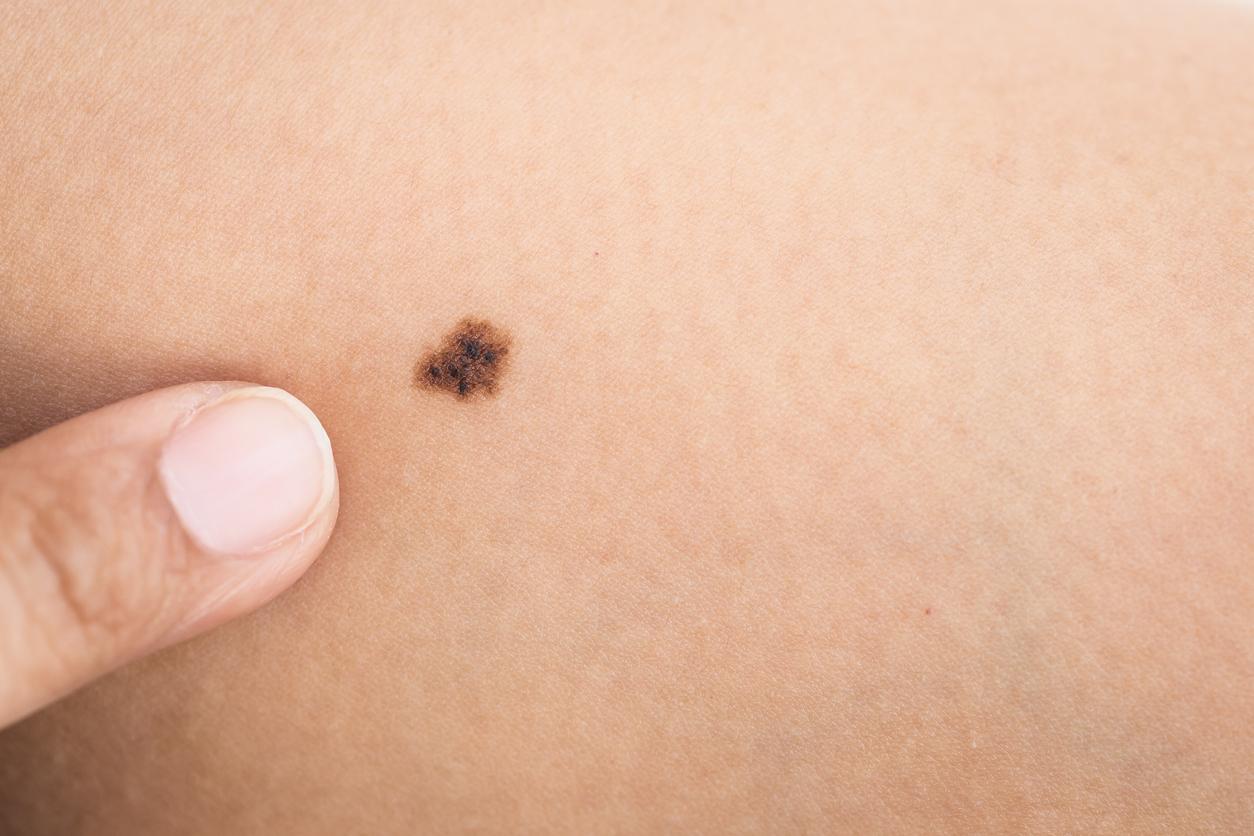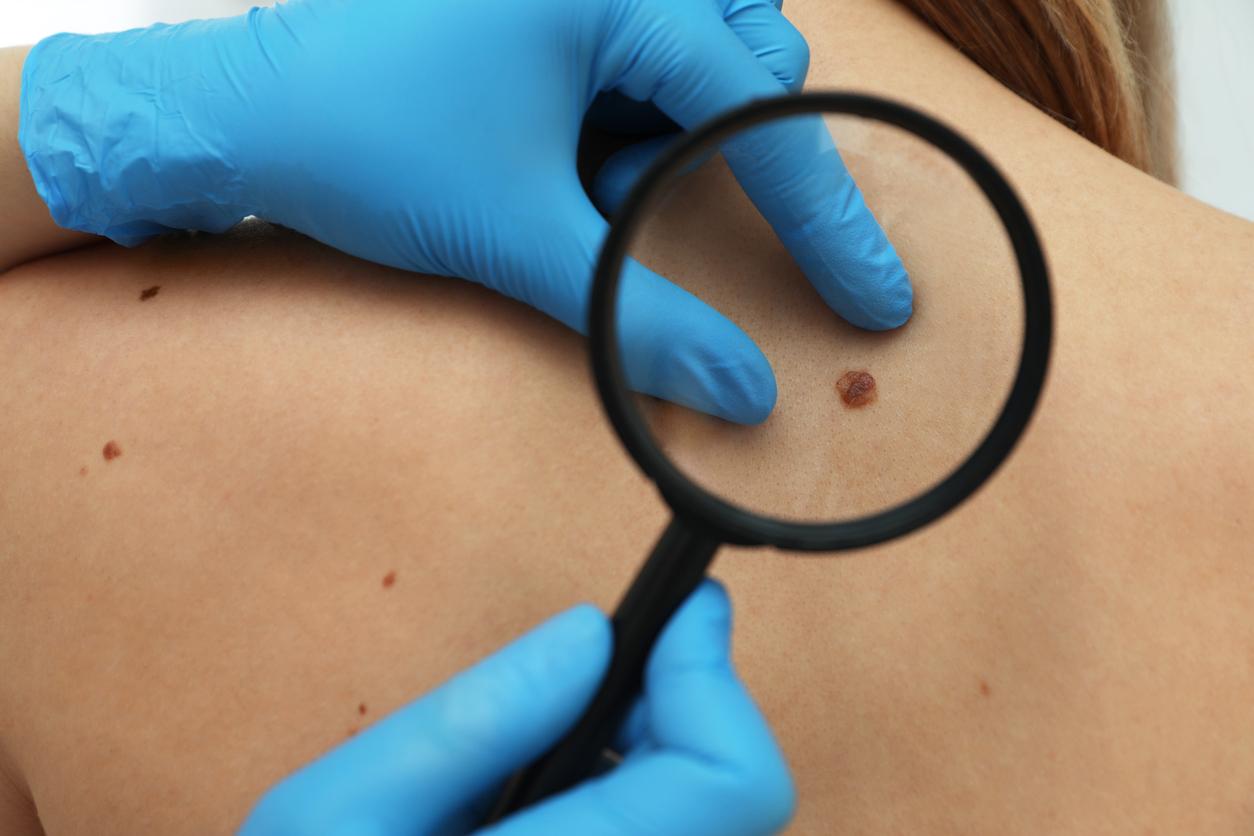Researchers have developed a new method for early diagnosis of melanoma, the most serious form of skin cancer.

- Melanoma, which affects around 15,000 new people each year in France, is an uncommon skin cancer (10% of cases) but it is the most dangerous, due to its high capacity to metastasize.
- Researchers have developed a bioelectronic microneedle patch that, by detecting tyrosinase (the main biomarker of malignant melanoma) directly in the skin, enables early detection of cancer.
- “Our painless and less invasive technique has the potential to provide faster and more reliable results compared to traditional biopsies,” the scientists said.
Melanoma, which affects around 15,000 new people each year in France, is an uncommon skin cancer (10% of cases) but it is the most dangerous, due to its high capacity to metastasize. This malignant tumor can however be treated effectively if it is detected at an early stage.
It is with this prevention in mind that a team of researchers from the Karolinska Institute, based in Stockholm, Sweden, has developed a new method for detecting melanoma: a “bioelectronic patch” applied to the skin. Their work was published in the journal Advanced Materials.
A bioelectronic patch that detects skin cancer biomarker
The patch in question is equipped with an array of microneedles that are able to electrochemically detect tyrosinase, an enzyme that is the main biomarker of malignant melanoma. By measuring tyrosinase levels directly in skin tissue, doctors can quickly identify biological changes related to the disease.
To develop this new process, the researchers used human tissue from healthy people. By applying tyrosinase directly to the skin, they were able to mimic skin cancer, and thus successfully test their detection patch. “This is an important step forward in improving skin health monitoring”they explain in a communicated. Note that the patch can also “be used to filter other biomarkers through a simple design change”and thus detect “other skin abnormalities such as inflammatory skin diseases or allergies.”
The study suggests that the new patch could be an alternative to current diagnostic methods, and lead to premature treatment of malignant melanoma. “Our painless and less invasive technique has the potential to provide faster and more reliable results compared to traditional biopsies”assures Professor Onur Parlak, lead author of the research.

Skin self-examination as a first screening for melanoma
As a reminder, the first way to detect a possible skin cancer is to self-examine your skin, according to the so-called ABCDE rule which allows you to recognize the warning signs: A for Asymmetry (the mole is not regular, neither round nor oval and its reliefs are not distributed regularly around its center); B for Irregular and poorly defined edges; C for Color (it is of several colors – black, brown, red, white, etc.); D for Diameter (it is more than 6 mm); E for Evolution (it evolves and grows, changes thickness and color). “The presence of one or more of these signs does not necessarily mean that you have melanoma, but justifies seeking medical advice without delay.”, warns Health Insurance.

















